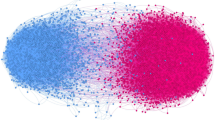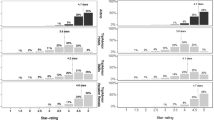Abstract
Deceptive voting behaviors of malicious users are known as the main reason of causing content pollution in Peer-to-Peer (P2P) content sharing systems. Due to the nature of P2P overlay network such as self-organization and anonymity, the existing methods on identifying deceptive votes are not effective, especially for collusive attackers. This paper presents Sorcery, a novel active challenge-response mechanism based on the notion that one side of interaction with the dominant information can detect whether the other side is telling a lie. To make each client obtain the dominant information, our approach introduces the social network to the P2P content sharing system; therefore, clients can establish the friend-relationships with the users who are either acquaintances in reality or those reliable online friends. Using the confidential voting histories of friends as own dominant information, the client challenges target content providers with the overlapping votes of both his friends and the target content provider, thus detecting whether the content provider is a deceptive user. Moreover, Sorcery provides the punishment mechanism which can reduce the impact brought by deceptive voting behaviors, and our work also discusses some key practical issues. The experimental results illustrate that Sorcery can effectively overcome the problem of deceptive voting behaviors in P2P content sharing systems, and work better than the existing reputation models.










Similar content being viewed by others
References
Gnutella. Available at: http://www.guntellaforums.com
MojoNation. Available at: http://sourceforge.net/projects/mojonation/
KaZaA. Available at: http://www.kazaa.com
eMule. Available at: http://www.emule-project.net
BitTorrent. Available at: http://www.bittorrent.com
Liang J, Kumar R, Xi Y, Ross KW (2005) Pollution in P2P file sharing systems. In: Proceedings of IEEE INFOCOM. Miami, FL, USA, March 2005
Curtis N, Safavi-Naini R, Susilo W (2004) X2Rep: enhanced trust semantics for the Xrep protocol. In: Proceedings of ACNS, pp 205-219
Damiani E, De Capitani di Vimercati S, Paraboschi S, Samarati P, Violante F (2002) A reputation-based approach for choosing reliable resources in Peer-To-Peer networks. In: Proceedings of ACM conference on computer and communications security (CCS’02), pp 207–216
Costa CP, Soares V, Almeida JM, Almeida V (2007) Fighting pollution dissemination in Peer-To-Peer networks. In: Proceedings of ACM SAC, Seoul, Korea, pp 1586–1590
Walsh K, Gün Sirer E (2006) Experience with an object reputation system for Peer-to-Peer filesharing. In: Proceedings of NSDI, May 2006, pp 1–1
Walsh K, Gün Sirer E (2005) Fighting Peer-to-Peer SPAM and decoys with object reputation. In: Proceedings of workshop of the economics of Peer-to-Peer systems, August 2005, pp 138–143
Garriss S, Kaminsky M, Freedman MJ, Karp B, Mazieres D, Yu H (2006) RE: reliable email. In: Proceedings of NSDI San Jose, California, USA, 8–10 May 2006
Xiong L, Liu L (2004) PeerTrust: supporting reputation-based trust for Peer-to-Peer electronic communities. In: IEEE transaction on knowledge and data engineering Knowledge and Data Engineering, IEEE Transactions on, vol. 16, no. 7, pp 843–857
Kamvar SD, Schlosser MT, Garcia-Molina H (2003) The eigentrust algorithm for reputation management in P2P networks. In: Proceedings of WWW Budapest, Hungary, pp 640–651
Pouwelse J, Garbacki P, Wang J, Bakker A, Yang J, Iosup A, Epema D, Reinders M, van Steen M, Sips H (2006) Tribler: a social-based Peer-to-Peer system. In: Proceedings of IPTPS Santa Barbara, CA. February 2006
Tran N, Min B, Li J, Subramanian L (2009) Sybil-resilient online content voting. In: Proceedings of NSDI, pp 15–28
Fudenberg D, Tirole J (1991) Game theory. MIT Press, Cambridge, MA
Osborne M, Rubinstein A (1994) A course in game theory. MIT Press, Cambridge, MA
Saroiu S, Gummadi P, Gribble S (2002) A measurement study of Peer-to-Peer file sharing systems. In: Proceedings of MMCN, San Jose, CA
Gummadi K, Dunn R, Saroiu S, Gribble S, Levy H, Zahorjan J (2003) Measurement, modeling, and analysis of a Peer-to-Peer file-sharing workload. In: Proceedings of ACM SOSP. In SOSP ’03: Proceedings of the nineteenth ACM symposium on Operating systems principles, pp 314–329
Resnick P, Kuwabara K, Zeckhauser R, Friedman E (2000) Reputation systems. In: Proceedings of communications of the ACM 43(12):45–48
Douceur JR (2002) The sybil attack. In: Proceedings of IPTPS, Cambridge, MA. pp 251–260
Zhang H, Goel A, Govindan R, Mason K, Roy BV (2004) Making eigenvector-based reputation systems robust to collusion. In: Proceedings of workshop on algorithms and models for the web-graph. pp 92–104
Thommes R, Coates M (2005) Epidemiological models of Peer-to-Peer viruses and pollution. In: Proceedings of technical report. McGill University
Vishnumurthy V, Chandrakumar S, Sirer EG (2003) KARMA: a secure economic framework for P2P resource sharing. In: Proceedings of workshop on the economics of Peer-to-Peer systems (IPTPS’03), Berkeley, CA
Yang B, Garcia-Molina H (2003) PPay: micropayments for Peer-to-Peer systems. In: Proceedings of ACM conference on computers and communications security (CCS’03), 27–30 October, 2003, Washington DC
Cornelli F, Damiani E, di Vimercati SDC, Paraboschi S, Samarati P (2002) Choosing reputable servents in a P2P network. In: Proceedings of WWW, Honolulu, Hawaii, USA, pp 376–386
Gauthier P, Bershad B, Gribble SD (2004) Dealing with cheaters in anonymous Peer-to-Peer networks. In: Proceedings of technical report of University of Washington
Liang J, Naoumov N, Ross KW (2005) Efficient blacklisting and pollution-level estimation in P2P file-sharing systems. In: Proceedings of AINTEC
Costa CP, Almeida JM (2007) Reputation systems for fighting pollution in peer-to-peer file sharing systems. In: Proceedings of peer-to-peer computing (P2P’07), pp 53–60
Chen R, Lua EK, Crowcroft J, Guo W, Tang L, Chen Z (2008) Securing peer-to-peer content sharing service from poisoning attacks. In: Proceedings of peer-to-peer computing (P2P’08), pp 22–29
Parno B, Wendlandt D, Shi E, Perrig A, Maggs BM, Hu Y-C (2007) Portcullis: protecting connection setup from denial-of-capability attacks. In: Proceedings of SIGCOMM, August 2007
Chen R, Guo W, Tang L, Hu J, Chen Z (2008) Scalable byzantine fault tolerant public key authentication for Peer-to-Peer networks. In: Proceedings of Euro-Par, Las Palmas de Gran Canaria, Spain, pp 601–610
Yu H, Kaminsky M, Gibbons PB, Flaxman A (2006) Sybilguard: defending against sybil attacks via social networks. In: Proceedings of SIGCOMM, Pisa, Italy, September 2006
Yu H, Gibbons PB, Kaminsky M, Xiao F (2008) SybilLimit: A near-optimal social network defense against sybil attacks. In: Proceedings of IEEE symposium on security and privacy (S&P’08), pp 3–17
Borisov N (2006) Computational puzzles as sybil defenses. In: Proceedings of peer-to-peer computing (P2P’06), pp 171–176
Rowaihy H, Enck W, McDaniel P, La Porta T (2007) Limiting sybil attacks in structured P2P networks. In: Proceedings of INFOCOM, 6–12 May 2007
Lamport L, Shostak RE, Pease MC (1982) The Byzantine generals problem. In: ACM transactions on programming languages and systems, pp 382–401
Kleinberg JM (2000) The small-world phenomenon: an algorithm perspective. In: Proceedings of STOC, pp 163–170
Mislove A, Marcon M, Gummadi PK, Druschel P, Bhattacharjee B (2007) Measurement and analysis of online social networks. In: Proceedings of internet measurement conference (IMC’07), San Dirgo, CA
Dumitriu D, Knightly EW, Kuzmanovic A, Stoica I, Zwaenepoel W (2005) Denial-of-service resilience in Peer-to-Peer file sharing systems. In: Proceedings of SIGMETRICS, pp 38–49
Zhao Y, Xie Y, Yu F, Ke Q, Yu Y, Chen Y, Gillum E (2009) BotGraph: large scale spamming botnet detection. In: Proceedings of NSDI, pp 321–334
Gummadi R, Balakrishnan H, Maniatis P, Ratnasamy S (2009) Not-a-Bot: improving service availability in the face of botnet attacks. In: Proceedings of NSDI. Boston, MA
Habib A, Xu D, Atallah M, Bhargava B, Chuang J (2005) Verifying data integrity in peer-to-peer media streaming. In: Proceedings of MMCN, pp 1–12
Mislove A, Post A, Druschel P, Gummadi PK (2008) Ostra: leveraging trust to thwart unwanted communication. In: Proceedings of NSDI. San Francisco, CA
Author information
Authors and Affiliations
Corresponding author
Rights and permissions
About this article
Cite this article
Zhai, E., Sun, H., Qing, S. et al. Sorcery: Overcoming deceptive votes in P2P content sharing systems. Peer-to-Peer Netw. Appl. 4, 178–191 (2011). https://doi.org/10.1007/s12083-010-0074-2
Received:
Accepted:
Published:
Issue Date:
DOI: https://doi.org/10.1007/s12083-010-0074-2




